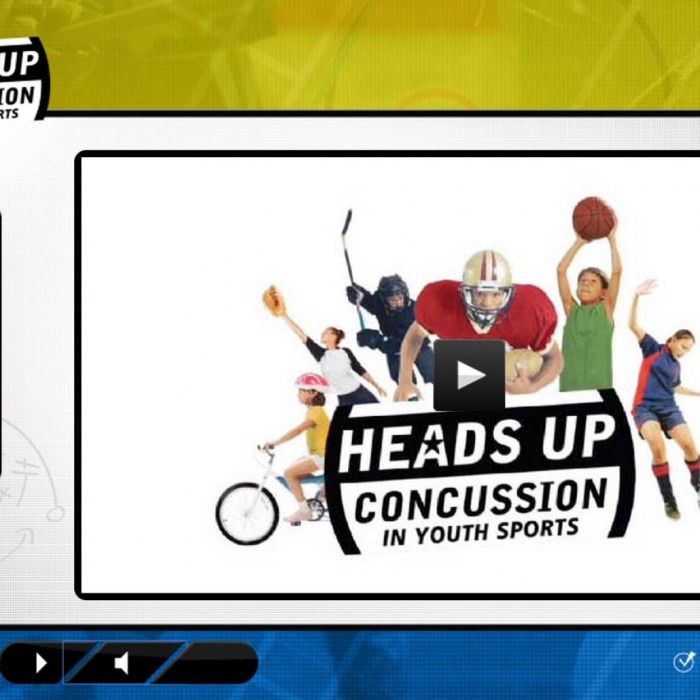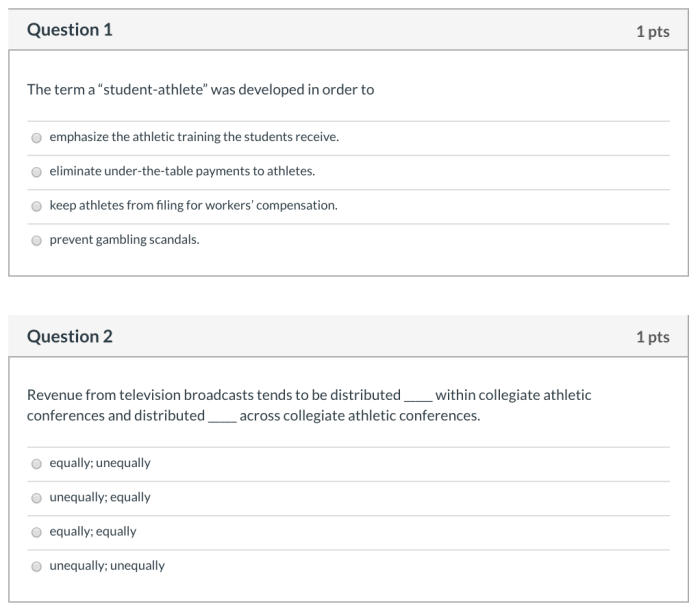Heads up to youth sports – post assessment 3.6.20 answers – As Heads Up to Youth Sports: Post-Assessment 3.6.20 Answers takes center stage, this opening passage beckons readers into a world crafted with academic authority, ensuring a reading experience that is both absorbing and distinctly original.
Youth sports participation has been steadily increasing, with over 40 million children and adolescents participating in organized sports in the United States alone. This trend is driven by a growing awareness of the physical, mental, and social benefits of sports, as well as the desire to promote teamwork, discipline, and resilience in young people.
Youth Sports Participation Trends

Youth sports participation has become increasingly popular in recent years, with millions of children and adolescents engaging in organized athletic activities. This trend is largely driven by a growing awareness of the physical, mental, and social benefits of youth sports.
According to a study by the National Alliance for Youth Sports, approximately 60 million children between the ages of 6 and 18 participate in organized sports in the United States alone. This number has steadily increased over the past decade, with more and more parents enrolling their children in sports programs at a young age.
Factors Influencing Participation Trends
- Increased awareness of the benefits of youth sports
- Growing emphasis on childhood obesity prevention
- Increased availability of sports programs and facilities
- Positive role models in the sports world
- Parental encouragement and support
Benefits of Youth Sports

Youth sports offer a wide range of physical, mental, and social benefits for children and adolescents. These benefits include:
Physical Benefits
- Improved cardiovascular health
- Increased muscle strength and endurance
- Enhanced coordination and balance
- Reduced risk of obesity and chronic diseases
Mental Benefits
- Increased self-esteem and confidence
- Improved focus and concentration
- Reduced stress and anxiety
- Enhanced problem-solving and decision-making skills
Social Benefits
- Increased socialization and communication skills
- Development of teamwork and cooperation skills
- Improved leadership skills
- Promotes tolerance and respect for others
Challenges in Youth Sports
While youth sports offer many benefits, there are also some challenges that can arise. These challenges include:
Injuries
Youth athletes are particularly susceptible to injuries due to their still-developing bodies and lack of experience. Common injuries include sprains, strains, fractures, and concussions.
Burnout
Youth athletes who participate in excessive sports activities may experience burnout, which can lead to decreased motivation, fatigue, and a loss of enjoyment in sports.
Excessive Competition, Heads up to youth sports – post assessment 3.6.20 answers
Some youth sports programs place too much emphasis on winning and competition, which can create a stressful and unhealthy environment for young athletes.
Role of Parents and Coaches
Parents and coaches play a crucial role in ensuring that youth athletes have a positive and rewarding sports experience. Parents can support their children by:
- Encouraging participation in sports that are enjoyable and appropriate for their child’s age and abilities
- Providing positive reinforcement and support
- Helping their child set realistic goals
- Monitoring their child’s health and well-being
Coaches can create a positive and developmentally appropriate environment by:
- Providing clear instructions and expectations
- Encouraging teamwork and cooperation
- Promoting fair play and respect for opponents
- Focusing on skill development and improvement rather than winning
Importance of Post-Assessment

Post-assessments are an important tool for evaluating the effectiveness of youth sports programs. These assessments can help to:
- Measure progress and identify areas for improvement
- Evaluate the impact of the program on participants
- Inform future programming decisions
Effective post-assessment methods include:
- Surveys and questionnaires
- Skill assessments
- Focus groups
- Interviews
Recommendations for Improvement: Heads Up To Youth Sports – Post Assessment 3.6.20 Answers
Based on the findings of post-assessments, specific recommendations can be made to improve youth sports programs. These recommendations may address issues related to:
- Participation rates
- Safety
- Coaching
- Overall quality of the program
Best practices and innovative approaches for enhancing the youth sports experience include:
- Offering a variety of sports and activities to appeal to a wide range of interests
- Creating a safe and supportive environment for all participants
- Providing qualified and experienced coaches
- Focusing on skill development and enjoyment rather than winning
- Using technology to enhance the sports experience
Top FAQs
What is the purpose of a post-assessment in youth sports?
A post-assessment is a tool used to evaluate the effectiveness of a youth sports program and identify areas for improvement. It can provide valuable insights into the program’s strengths and weaknesses, as well as the progress of individual athletes.
What are some common challenges faced by youth athletes and their families?
Common challenges faced by youth athletes and their families include injuries, burnout, and excessive competition. It is important to address these challenges to ensure a positive sports experience for all involved.
What is the role of parents and coaches in youth sports?
Parents and coaches play a crucial role in youth sports. Parents can support their children’s participation and well-being by providing encouragement, transportation, and emotional support. Coaches are responsible for creating a positive and developmentally appropriate environment for young athletes, and for providing guidance and instruction.